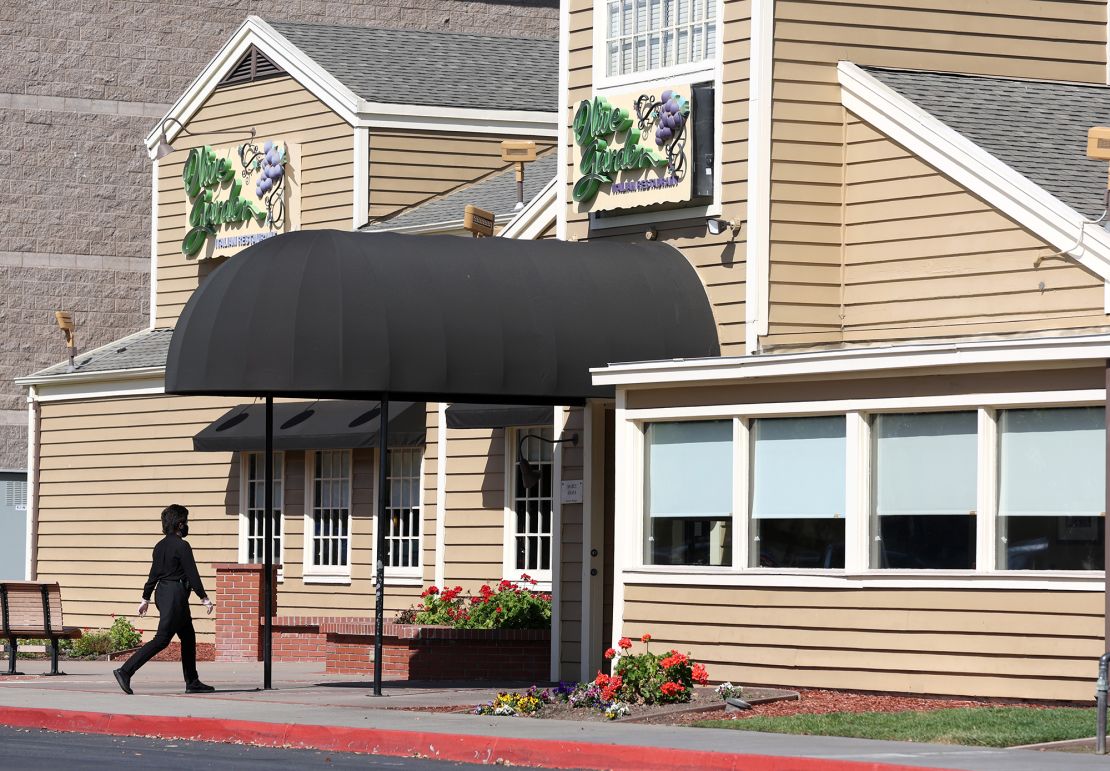New York
CNN
—
When the first Olive Garden opened in 1982 in Orlando, Florida, it was a disaster.
Long lines formed to get inside. The cooks couldn’t make enough sauce to keep up with demand. Bells constantly rang, alerting the kitchen staff that a table was waiting more than 10 minutes for their meal.
The second day wasn’t any better. It was immediately clear to Blaine Sweatt, an Olive Garden cofounder and general manager, that he needed a quick and cost-efficient way to satisfy hordes of hungry customers as they waited for their entrées.
Enter an endless supply of breadsticks, soups and salads.
“It made guests really happy, but it also helped the kitchen catch up since servers could get them themselves,” said Jaime Bunker, senior vice president of marketing for Olive Garden.
The special — albeit slightly tweaked to choose either soup or salad — was added to menus and included for free to guests ordering an entrée. Four decades later, the “endless” option remains a hallmark on Olive Garden’s menu.
Endless breadsticks, soup and salad are still coveted by cash-conscious guests seeking value amid economic uncertainty that’s hurting the casual dining sector. The deal includes unlimited freshly baked breadsticks along with a choice of a soup (Chicken and Gnocchi, Pasta e Fagioli, Minestrone and Zuppa Toscana) or a salad.
“It’s a tradition for the brand that even to this day embodies that spirit that we have of Italian generosity, of family, hospitality, of being in someone’s home, where they just want nothing more than for you to have a good time and to be well fed,” Bunker told CNN.
The special has become a “core element” to Olive Garden’s identity, said Maeve Webster, president of consulting firm Menu Matters, noting that there’s been “a lot of pressure from some of the investment groups that wanted to get rid of it because of profitability and cost.”
About a decade ago, a prominent investor in Olive Garden’s parent company was so fed up with the chain’s sluggish sales that it released a nearly 300-page slideshow criticizing its breadsticks and sauce, suggesting changes like a management overhaul.
Some things on its menu changed as a result, but the endless breadsticks stuck around.
“You have to give Olive Garden and those running it credit for being true to that brand identity and sticking with it, even if it costs a little bit more,” Webster told CNN.
Expanding the ‘endless’
Olive Garden’s endless option offers value to both customers and the company, Webster said.
“It’s value, from a price point of view, where you’re getting an enormous amount for the money you’re spending,” she said, adding that there is a benefit for Olive Garden in messaging to consumers that “this chain is truly trying to take care of them.”
Breadsticks and soups are easy to plate and are both cost-efficient foods with high-profit margins, meaning they don’t dent the chain’s bottom line. Salads are a “little higher” in cost because “produce is a little more costly and you actually have to throw the salad together,” she said.
However, Bunker said the pricing of the three items is “built in” to the menu costs. Darden Restaurants, the chain’s parent company, is cautious about hiking prices. It only raised Olive Garden’s prices by about 2% last year, which is lower than the rate of inflation.
The special was expanded into a meal option for lunch in 1991 and three years later as a dinner option. Beyond that, the popularity of those “endless” offerings prompted Olive Garden to expand the concept to other parts of its menu.
In 1995, Olive Garden launched an unlimited pasta offer that makes yearly appearances, except for a brief break during the height of the Covid-19 pandemic. The “Never Ending Pasta Bowl” promotion happens around the back-to-school time in the fall when “people have a lot of expenses” and “consumers are looking to save,” Bunker added.

Value options for customers, notably the return of its buy-one meal and get a take-home meal deal following a five-year hiatus, helped raise Olive Garden’s sales by 6.9% in its most recent quarter.
That was the chain’s best same-store sales performance in three years and a sharp reversal from the 2.9% decline it experienced in the same quarter a year ago.
Darden doesn’t expect growth to remain that high, but it is forecasting a solid 2% to 3.5% rise in same-store sales for the next year. Similar to Chili’s, Olive Garden says it’s seeing customers revisit the chain because it offers a better value compared to fast food and grocery shopping.
“Our consumers want to go out and spend their hard-earned money, and we think we’re taking some wallet share from fast food and fast casual,” Darden CEO Rick Cardenas said on call with analysts in June.
Olive Garden is adding more lower-priced options in the coming months and isn’t planning any additional price increases, executives said on the call. Darden’s (DRI) stock is up nearly 20% for the year.
Part of Olive Garden’s success, in Webster’s opinion, is that the chain hasn’t “allowed themselves to get too distracted by the relentless pursuit of trends that the industry finds itself in.”
Bunker said Olive Garden has no plans to tinker with or axe the endless soup or salad and breadsticks option — and confirmed that there’s no limit to how much a guest can order in one sitting.
“We’re very committed to giving our guests never-ending, abundant, crave-able Italian food at an everyday value,” she said. “It’s just part of who the brand is.”

